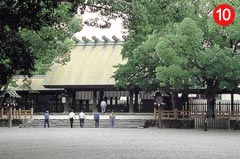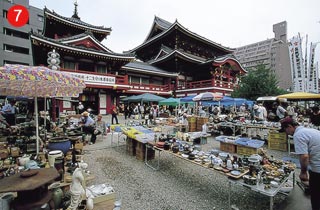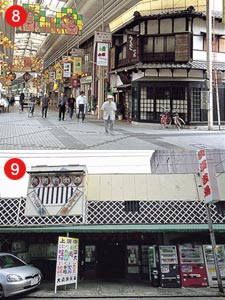|
While Nagoya Castle represents the life of the feudal elite, Osu Kannon Temple and its surroundings are associated with the lives of ordinary people. The temple was established by Ieyasu in 1617, and remains Nagoya's center of traditional culture to this day. The temple possesses many works of ancient literature, including the oldest extant copy of Kojiki (Record of Ancient Matters), compiled in the 8th century. Peace and prosperity in the castle town helped develop the temple area into a place for plays, mimic comedy, sumo matches and other entertainment for the common people, much like the Asakusa district of Tokyo. Today, the past stays alive in the form of shopping arcades and places of entertainment, attracting many people.
Nagoya's roots go even deeper into the past. Austere Atsuta Shrine is situated in a dense woodland (area, about 190,000 m²), in the southern part of the city. About 8 million people come every year, many to pay homage to an object enshrined here, the kusanagi no tsurugi sword. This is one of the three Imperial Regalia symbolizing the authority of the Emperor. The pedestrian road in the shrine compound stretches on and on, with gravel to walk over and a thick canopy of trees above—oaks, zelkovas, Aphananthe aspera, ginkgoes—all of this increases the feeling of serenity. One immense tree in the forest, a camphor said to be more than 1,000 years old, adds to the solemn atmosphere. After one last torii gate, you reach the main shrine building. The mystery of the moment seems to deepen at the sight of the calm faces of people finishing their rituals.

|
|
(10) Atsuta Shrine is located in the southern part of Nagoya. It is a quiet, peaceful place, even though many pilgrims visit it every day.
|
Down through the centuries, Nagoya has prospered as an advanced urban hub for people, goods and information. Soon, the metropolis will welcome Expo visitors from around the world, beginning a new chapter in history and tradition.
|


